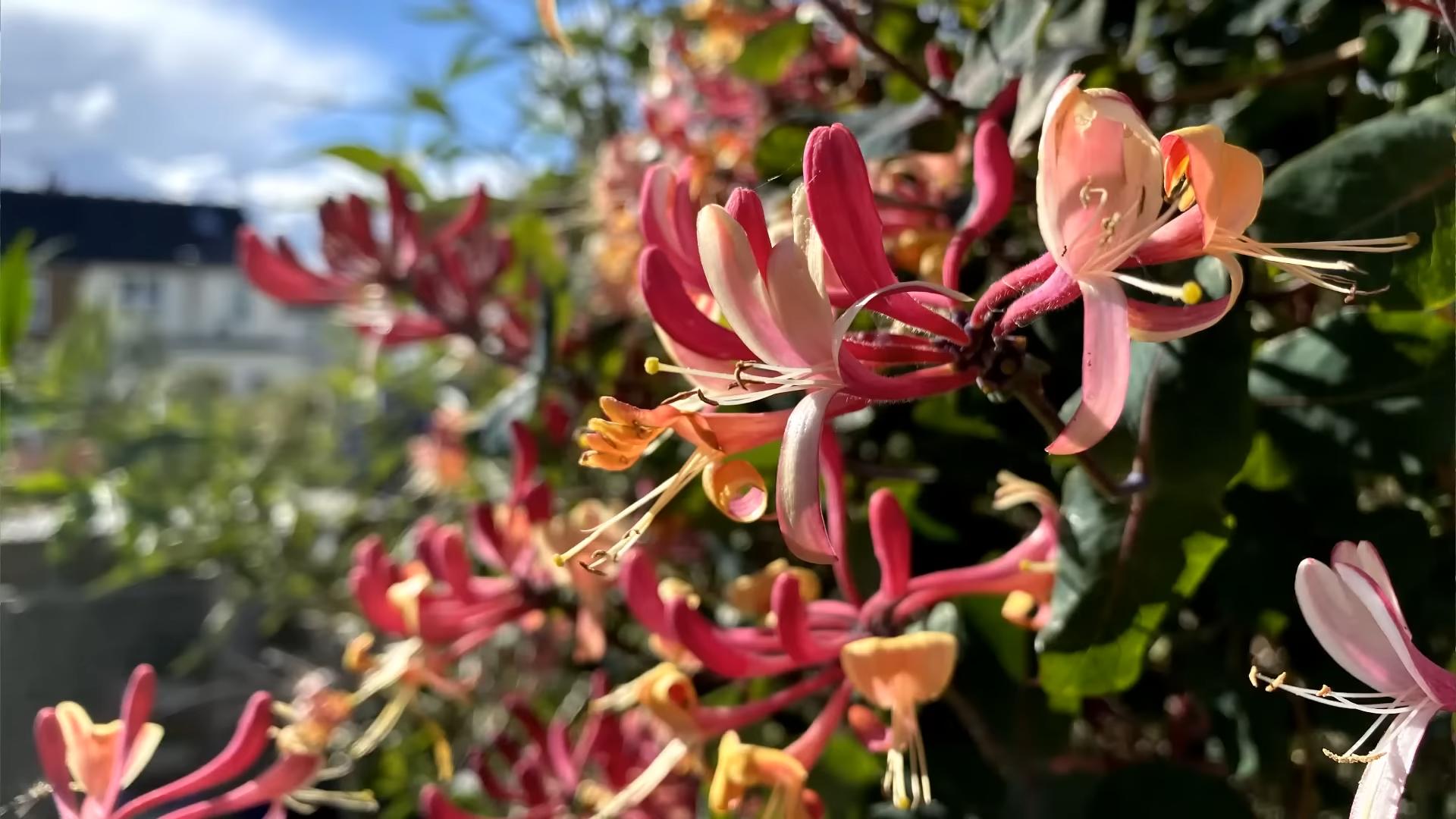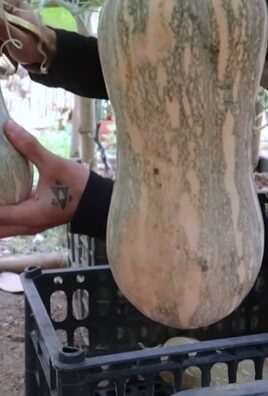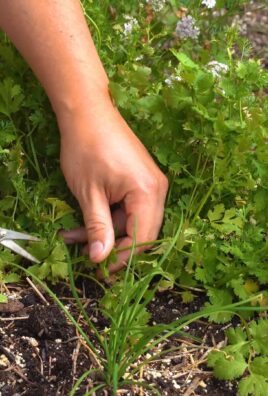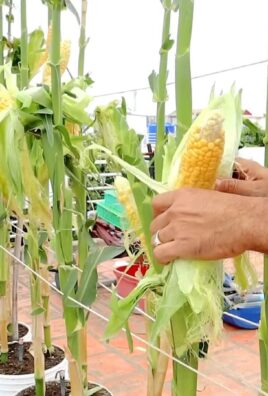Grow Honeysuckle on Trellis and transform your garden into a fragrant, vibrant haven! Have you ever dreamt of strolling through your backyard, enveloped in the sweet, intoxicating scent of honeysuckle? I know I have! For centuries, honeysuckle has been cherished not only for its beauty but also for its medicinal properties and symbolic meaning – often representing love and devotion. From ancient folklore to modern gardens, this climbing vine has captivated hearts and landscapes alike.
But let’s be honest, sometimes getting those gorgeous vines to climb exactly where we want them can be a bit of a challenge. That’s where the magic of DIY comes in! Many people struggle with unruly honeysuckle that sprawls haphazardly, missing out on the full potential of its beauty and fragrance. That’s why I’m so excited to share these simple yet effective tricks for training your honeysuckle to grow honeysuckle on trellis like a pro.
This article will guide you through creating or choosing the perfect trellis, planting your honeysuckle for optimal growth, and mastering the art of training and pruning. Get ready to unlock the secrets to a stunning, fragrant garden feature that will be the envy of all your neighbors!

DIY: Creating a Stunning Honeysuckle Trellis Garden
Okay, honeysuckle lovers, let’s get our hands dirty! I’m so excited to share my guide on how to create a beautiful honeysuckle trellis garden. Honeysuckle is not only gorgeous with its fragrant blooms, but it also attracts hummingbirds and butterflies – a win-win! This project is perfect for adding vertical interest to your garden, covering an unsightly fence, or creating a fragrant privacy screen.
Choosing Your Honeysuckle and Trellis
Before we dive into the building process, let’s talk about selecting the right honeysuckle variety and trellis for your space. This is crucial for long-term success and a visually appealing result.
* **Honeysuckle Variety:** Not all honeysuckles are created equal! Some are invasive, while others are well-behaved. I highly recommend choosing a native or non-invasive variety. Some great options include:
* **’Dropmore Scarlet’ Honeysuckle (Lonicera x brownii ‘Dropmore Scarlet’):** This is a popular choice with vibrant red-orange flowers and a long bloom time. It’s also relatively compact.
* **’Goldflame’ Honeysuckle (Lonicera x heckrottii ‘Goldflame’):** This variety boasts beautiful pink and yellow flowers and is known for its strong fragrance.
* **American Honeysuckle (Lonicera americana):** A native option with fragrant yellow and white flowers.
* Avoid Japanese Honeysuckle (Lonicera japonica): This is considered invasive in many areas, so it’s best to steer clear.
* **Trellis Material:** You have several options when it comes to trellis materials, each with its own pros and cons:
* **Wood:** A classic and natural choice. Cedar and redwood are naturally rot-resistant. You can build your own or purchase pre-made wooden trellises.
* **Metal:** Durable and long-lasting. Wrought iron trellises are particularly beautiful but can be more expensive. Powder-coated metal is rust-resistant.
* **Bamboo:** A lightweight and eco-friendly option. Bamboo trellises are often less expensive but may not last as long as wood or metal.
* **Plastic:** A budget-friendly option, but it may not be as aesthetically pleasing as other materials. Make sure to choose a UV-resistant plastic to prevent it from becoming brittle in the sun.
* **Trellis Size and Style:** Consider the mature size of your chosen honeysuckle variety when selecting a trellis. You’ll want a trellis that’s tall and wide enough to support the plant as it grows. The style of the trellis is a matter of personal preference. Options include:
* **Fan Trellis:** A classic and elegant choice.
* **Lattice Trellis:** Provides good support for climbing plants.
* **Obelisk Trellis:** Adds vertical interest to the garden.
* **Arched Trellis:** Creates a beautiful entryway or focal point.
Materials You’ll Need
Alright, let’s gather our supplies! Here’s a list of everything you’ll need for this project:
* Honeysuckle plant (of course!)
* Trellis (pre-made or materials to build your own)
* Shovel
* Gardening gloves
* Measuring tape
* Level
* Post hole digger (if you’re installing posts for your trellis)
* Fast-setting concrete mix (if you’re installing posts)
* Water
* Mixing tub or wheelbarrow
* Trowel
* Pruning shears
* Gardening twine or plant ties
* Soil amendments (compost, aged manure)
* Mulch
Building and Installing Your Trellis (If Needed)
If you’re using a pre-made trellis, you can skip this section. But if you’re feeling ambitious and want to build your own, here’s a basic guide for a simple wooden lattice trellis:
1. **Cut the Wood:** Decide on the desired height and width of your trellis. Cut the wood (cedar or redwood is best) into the following pieces:
* Two vertical posts (for the sides)
* Horizontal slats (the number will depend on the desired spacing)
* Top and bottom support pieces (optional, but they add stability)
2. **Assemble the Frame:** Attach the top and bottom support pieces (if using) to the vertical posts using screws or nails. Make sure the frame is square.
3. **Attach the Slats:** Space the horizontal slats evenly across the frame. Attach them to the vertical posts using screws or nails.
4. **Sand and Finish (Optional):** Sand any rough edges and apply a wood sealant or paint to protect the trellis from the elements.
5. **Install the Trellis:** Now, let’s get that trellis in the ground!
* **Determine the Location:** Choose a sunny spot with well-drained soil. Honeysuckle needs at least 6 hours of sunlight per day.
* **Dig Post Holes (If Needed):** If your trellis requires posts for support, dig post holes that are deep enough to provide stability. A good rule of thumb is to bury the posts at least one-third of their length.
* **Set the Posts:** Place the posts in the holes and use a level to ensure they are plumb.
* **Pour Concrete:** Mix the fast-setting concrete according to the manufacturer’s instructions. Pour the concrete into the post holes, making sure to fill them completely.
* **Let the Concrete Cure:** Allow the concrete to cure for at least 24 hours before attaching the trellis.
* **Attach the Trellis to the Posts:** Once the concrete is cured, attach the trellis to the posts using screws or bolts. Make sure the trellis is securely fastened.
Planting Your Honeysuckle
Now for the fun part – planting your honeysuckle!
1. **Prepare the Soil:** Dig a hole that is twice as wide as the root ball of your honeysuckle plant and just as deep.
2. **Amend the Soil:** Mix some compost or aged manure into the soil you removed from the hole. This will improve drainage and provide nutrients for your plant.
3. **Remove the Plant from the Container:** Gently remove the honeysuckle plant from its container. If the roots are pot-bound (tightly circling the root ball), gently loosen them with your fingers.
4. **Plant the Honeysuckle:** Place the honeysuckle plant in the hole, making sure the top of the root ball is level with the surrounding soil.
5. **Backfill the Hole:** Backfill the hole with the amended soil, gently tamping it down around the plant.
6. **Water Thoroughly:** Water the newly planted honeysuckle thoroughly.
7. **Mulch:** Apply a layer of mulch around the base of the plant to help retain moisture and suppress weeds.
Training Your Honeysuckle
Honeysuckle needs a little guidance to climb the trellis properly. Here’s how to train it:
1. **Initial Training:** As the honeysuckle grows, gently guide its stems towards the trellis.
2. **Secure the Stems:** Use gardening twine or plant ties to secure the stems to the trellis. Be careful not to tie them too tightly, as this can damage the stems.
3. **Continue Training:** Continue training the honeysuckle as it grows, guiding the stems to fill in the trellis.
4. **Pruning:** Prune your honeysuckle regularly to maintain its shape and encourage flowering. Prune after flowering to remove dead or crossing branches.
Caring for Your Honeysuckle
With a little care, your honeysuckle will thrive and provide years of beauty and fragrance.
* **Watering:** Water your honeysuckle regularly, especially during dry periods.
* **Fertilizing:** Fertilize your honeysuckle in the spring with a balanced fertilizer.
* **Pest and Disease Control:** Honeysuckle is generally pest and disease-resistant, but keep an eye out for aphids or powdery mildew. Treat any problems promptly with appropriate organic solutions.
* **Deadheading:** Deadhead spent flowers to encourage more blooms.
Troubleshooting
Sometimes, things don’t go exactly as planned. Here are a few common problems and how to fix them:
* **Honeysuckle Not Climbing:** If your honeysuckle isn’t climbing, it may need more guidance. Make sure you’re securing the stems to the trellis regularly.
* **Yellowing Leaves:** Yellowing leaves can be a sign of overwatering or nutrient deficiency. Check the soil moisture and adjust your watering schedule accordingly. Fertilize with a balanced fertilizer.
* **Lack of Flowers:** A lack of flowers can be caused by insufficient sunlight, improper pruning, or nutrient deficiency. Make sure your honeysuckle is getting at least 6 hours of sunlight per day. Prune after flowering and fertilize in the spring.
Enjoying Your Honeysuckle Trellis Garden
Congratulations! You’ve successfully created a beautiful honeysuckle trellis garden. Now, sit back, relax, and enjoy

Conclusion
So, there you have it! Growing honeysuckle on a trellis isn’t just about adding a beautiful, fragrant plant to your garden; it’s about creating a living, breathing work of art. It’s about attracting hummingbirds and butterflies, filling your outdoor space with intoxicating aromas, and enjoying the satisfaction of nurturing something beautiful from start to finish. This DIY project is a must-try for anyone looking to elevate their garden’s aesthetic and ecological value.
Why is this a must-try? Because it’s more than just planting a vine. It’s about creating a vertical focal point that draws the eye and adds dimension to your landscape. It’s about maximizing space in smaller gardens by utilizing vertical growth. And, most importantly, it’s about experiencing the joy of watching your honeysuckle thrive, transforming a simple trellis into a vibrant, fragrant wall of blooms. The sweet scent alone is worth the effort!
Consider these variations to personalize your honeysuckle trellis:
* **Choose different honeysuckle varieties:** Explore the diverse world of honeysuckle! From the classic Japanese honeysuckle (Lonicera japonica) with its creamy white and yellow flowers to the native American honeysuckle (Lonicera sempervirens) with its vibrant red blooms, there’s a variety to suit every taste and climate. Experiment with different colors and fragrances to create a truly unique display.
* **Incorporate companion plants:** Plant complementary flowers and foliage around the base of your trellis to add visual interest and attract even more pollinators. Consider plants like lavender, salvia, or bee balm, which not only look beautiful but also provide additional nectar sources for bees and butterflies.
* **Get creative with your trellis design:** Don’t limit yourself to traditional wooden trellises. Explore different materials like metal, bamboo, or even repurposed materials like old ladders or gates. The possibilities are endless! Let your creativity shine and design a trellis that reflects your personal style.
* **Light it up:** Add string lights to your trellis to create a magical ambiance in the evening. The soft glow of the lights will highlight the honeysuckle’s blooms and create a cozy and inviting atmosphere.
We are confident that you will find this DIY project rewarding and enjoyable. The process of training your honeysuckle to climb the trellis, watching it bloom, and enjoying its fragrance is a truly fulfilling experience.
Now, it’s your turn! We encourage you to try this DIY trick and share your experience with us. We’d love to see photos of your honeysuckle trellises and hear about any tips or tricks you discover along the way. Share your successes (and even your challenges!) in the comments below. Let’s create a community of honeysuckle enthusiasts and inspire each other to create beautiful and thriving gardens. Remember, growing **honeysuckle on trellis** is an investment in beauty, fragrance, and the overall health of your garden ecosystem. So, get planting and let the sweet scent of honeysuckle fill your world!
FAQ
What type of trellis is best for honeysuckle?
The best type of trellis for honeysuckle is one that provides ample support for its climbing vines. Honeysuckle can become quite heavy, especially when in full bloom, so a sturdy trellis is essential. Options include wooden trellises, metal trellises, or even a strong wire mesh attached to a fence or wall. The key is to choose a trellis with openings or a grid pattern that the honeysuckle vines can easily grip and climb. Consider the mature size of your honeysuckle variety when selecting a trellis; some varieties can grow quite large and will require a more substantial structure. Also, think about the aesthetic of your garden and choose a trellis that complements your overall design.
How do I train honeysuckle to climb a trellis?
Training honeysuckle to climb a trellis requires a bit of patience and guidance. Start by planting your honeysuckle near the base of the trellis. As the vines begin to grow, gently weave them through the openings in the trellis. You can use soft plant ties or twine to secure the vines to the trellis, but be careful not to tie them too tightly, as this can damage the stems. Regularly check the vines and redirect them as needed to encourage them to climb in the desired direction. Prune any stray or unruly vines to maintain the shape of the plant and prevent it from becoming too overgrown. With consistent training, your honeysuckle will eventually cover the trellis and create a beautiful vertical display.
How often should I water honeysuckle?
The watering needs of honeysuckle depend on several factors, including the climate, soil type, and the age of the plant. Newly planted honeysuckle requires more frequent watering to help it establish its root system. Water deeply and regularly, especially during dry periods. Once established, honeysuckle is relatively drought-tolerant, but it still benefits from regular watering, especially during hot summer months. Check the soil moisture regularly and water when the top inch or two of soil feels dry to the touch. Avoid overwatering, as this can lead to root rot. A good rule of thumb is to water deeply but infrequently, allowing the soil to dry out slightly between waterings.
What kind of soil does honeysuckle need?
Honeysuckle thrives in well-drained soil that is rich in organic matter. It prefers a slightly acidic to neutral soil pH. Before planting, amend the soil with compost or other organic matter to improve drainage and fertility. If your soil is heavy clay, consider adding sand or perlite to improve drainage. Honeysuckle is adaptable to a variety of soil types, but it will perform best in soil that is well-drained and provides adequate nutrients. A soil test can help you determine the pH and nutrient levels of your soil and make any necessary amendments.
Does honeysuckle need full sun?
While honeysuckle can tolerate some shade, it generally prefers full sun for optimal growth and flowering. Full sun means at least six hours of direct sunlight per day. In shadier locations, honeysuckle may produce fewer flowers and its growth may be less vigorous. However, some varieties of honeysuckle are more shade-tolerant than others. If you live in a hot climate, providing some afternoon shade can help protect the plant from scorching. When planting honeysuckle, choose a location that receives plenty of sunlight to ensure healthy growth and abundant blooms.
How do I prune honeysuckle?
Pruning honeysuckle is essential for maintaining its shape, promoting healthy growth, and encouraging abundant flowering. The best time to prune honeysuckle is after it has finished flowering. Remove any dead, damaged, or diseased branches. Thin out the plant by removing some of the older, thicker stems to improve air circulation and light penetration. You can also prune back the vines to control their size and shape. When pruning, make cuts just above a leaf node or bud. Avoid pruning too heavily, as this can reduce flowering. Regular pruning will help keep your honeysuckle healthy, vigorous, and beautiful.
Is honeysuckle invasive?
Some varieties of honeysuckle, particularly Japanese honeysuckle (Lonicera japonica), are considered invasive in certain regions. These invasive varieties can spread aggressively and outcompete native plants. Before planting honeysuckle, research the specific variety you are considering and check whether it is considered invasive in your area. Choose non-invasive or native honeysuckle varieties to avoid contributing to the spread of invasive species. American honeysuckle (Lonicera sempervirens) is a great native alternative. Be responsible when planting honeysuckle and take steps to prevent it from spreading beyond your garden.
How do I deal with pests and diseases on honeysuckle?
Honeysuckle is generally a relatively pest- and disease-resistant plant, but it can occasionally be affected by certain problems. Common pests that may attack honeysuckle include aphids, spider mites, and scale insects. These pests can be controlled with insecticidal soap or horticultural oil. Diseases that may affect honeysuckle include powdery mildew and leaf spot. These diseases can be prevented by providing good air circulation and avoiding overhead watering. If your honeysuckle is affected by pests or diseases, treat it promptly to prevent the problem from spreading. Regular monitoring and preventative measures can help keep your honeysuckle healthy and thriving.





Leave a Comment